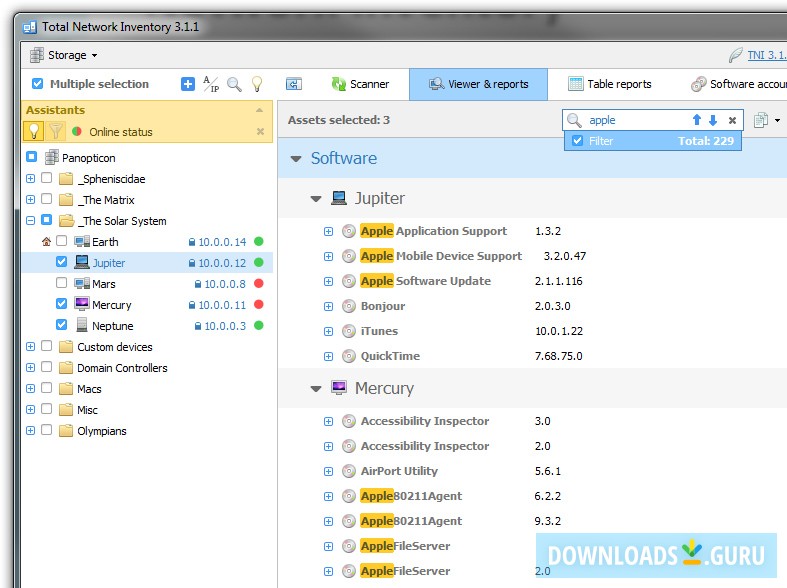

Traditional fields of embedded systems, wireless sensor networks, control systems, automation (including home and building automation), independently and collectively enable the Internet of things. The field has evolved due to the convergence of multiple technologies, including ubiquitous computing, commodity sensors, increasingly powerful embedded systems, as well as machine learning. Internet of things has been considered a misnomer because devices do not need to be connected to the public internet, they only need to be connected to a network, and be individually addressable. The Internet of things (IoT) falls under the Electronics & Communication and Computer Science Engineering.

Total network inventory alternative software#
The Internet of things ( IoT) describes physical objects (or groups of such objects) with sensors, processing ability, software and other technologies that connect and exchange data with other devices and systems over the Internet or other communications networks.


 0 kommentar(er)
0 kommentar(er)
